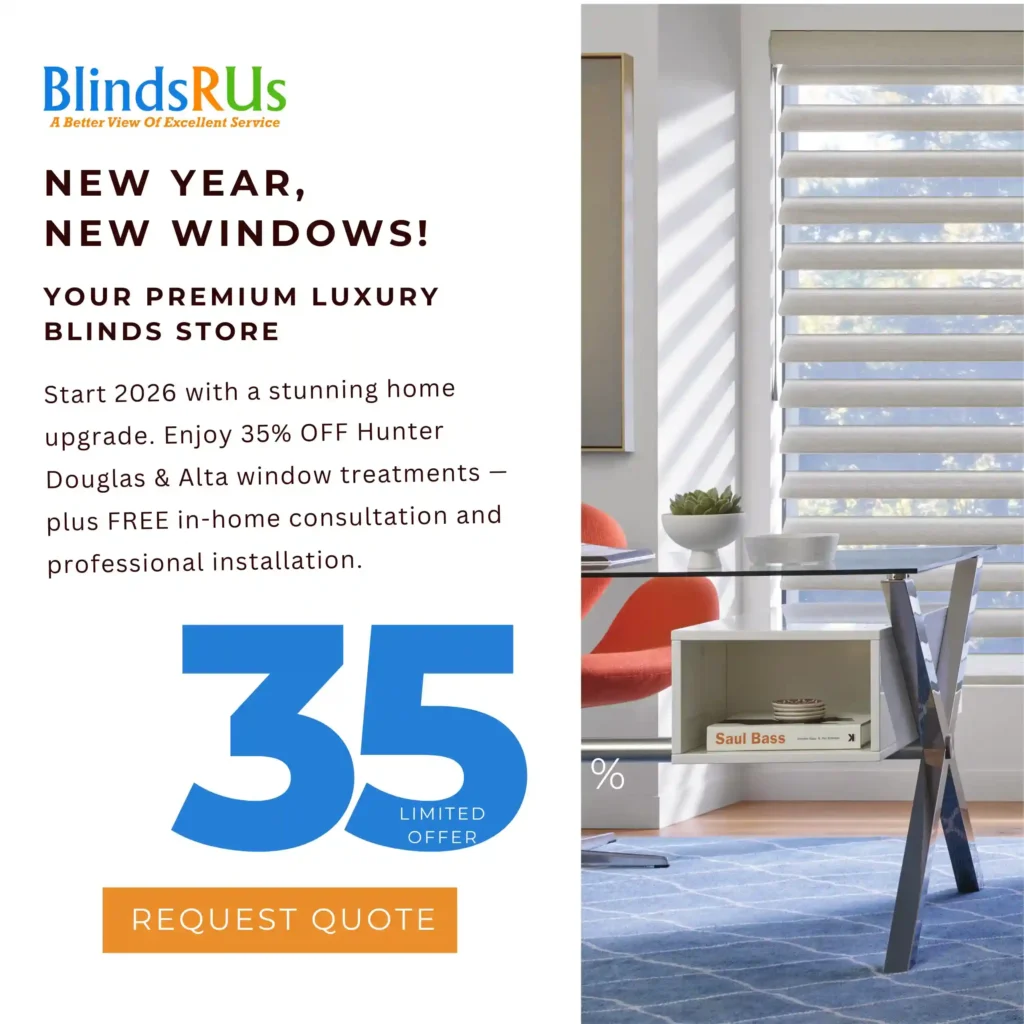Measuring windows for curtains and drapes sounds simple, but small mistakes can make a big difference. Too short, and they look unfinished. Too narrow, and light spills through the sides. About 65% of homeowners end up with ill-fitting curtains because they skip the measuring basics.
If you’ve searched “window treatments near me” or browsed a window treatment store, you know how many options there are. From affordable window treatments to designer window treatments, everything begins with the right measurements. Once you know the numbers, your curtains, blinds, and shades will look polished and function smoothly.
How to Measure Curtain Width for Window Treatments
Start with the width. Measure your window frame from edge to edge, then extend the curtain rod 4–6 inches beyond each side. This extra space allows the curtains to stack outside the glass when open, letting in more light.
For drapes window treatments, fullness matters. As a rule, buy panels that equal two to three times the window width. This gives fabric enough body to cover the window without looking stretched. Blinds and window treatments such as wooden window blinds or roller blinds for windows usually fit closer, but curtains always look best with overlap.
Takeaway: Always measure wider than the frame so your curtains feel balanced, not cramped.
Measuring Curtain Length: Floor-Length, Above-Floor, and Short Options
Length sets the tone of the room. Measure from the curtain rod placement to the spot where you want the fabric to end.
- Floor-length: Elegant and timeless, perfect for bedrooms, dining rooms, or living spaces.
- Slightly above the floor: About half an inch off the ground for a neat, practical finish. Great for families with pets or kids.
- Short curtains: Best for kitchens, bathrooms, or small rooms where long fabric would get in the way.
Modern window treatments often favor floor-length for a clean look, while custom window treatments can include puddling drapes for drama. Think about your lifestyle—if vacuuming around long fabric feels annoying, choose the above-floor style.
Takeaway: Pick a length that matches how you live, not just how you want it to look.
Mounting Style and Placement
Where you place your rod changes everything. Mount it higher above the window frame to make ceilings appear taller. Extend rods wider to make narrow windows look bigger.
Window treatment ideas often combine curtains and window treatments with window blinds and shades. For example, pull down shades for windows provide daytime privacy, while curtains drawn in the evening add warmth. Affordable window treatments can still look custom when rods are placed thoughtfully.
Takeaway: Play with height and width to reshape how your windows—and even your walls—look.
Measuring Windows for Sliding Glass Doors and Curved Windows
Sliding doors and curved windows need special attention. Curtains for sliding glass doors should move smoothly without blocking the door. Vertical panels, window shades for sliding glass doors, or electric shades for windows are practical and stylish solutions.
Curved window treatments almost always require a custom window treatment. Ready-made panels rarely fit these shapes. A designer window treatment can highlight the curve while still providing privacy and control. If you’re unsure, a window treatment store can show you the best window treatment options for unusual windows.
Takeaway: Unique windows benefit from custom window treatments to match shape and function.
Layering Curtains with Blinds and Shades
The best window treatments often mix layers. Pairing curtains with blinds and shades for windows gives you flexibility. Roller blinds for windows under sheer curtains filter light, while wooden window blinds add warmth under heavier drapes.
Affordable window treatments can still look high-end with smart layering. Roll up shades for windows or electric shades for windows provide ease, while curtains finish the look. Curtains and window treatments don’t have to stand alone—layering adds depth.
Takeaway: Combine styles for both function and beauty.
Choosing the Best Window Treatment for You
Accurate measurements are the foundation for curtains and window treatments that look right and last. Once you’ve measured width and length, thought about mounting, and considered your window shape, you can focus on style.
Whether you choose affordable window treatments, custom window treatments, or designer window treatments, good measuring makes them work for your home. From blinds and shades for windows to drapes window treatments, the numbers come first—then the personality of your space follows.


